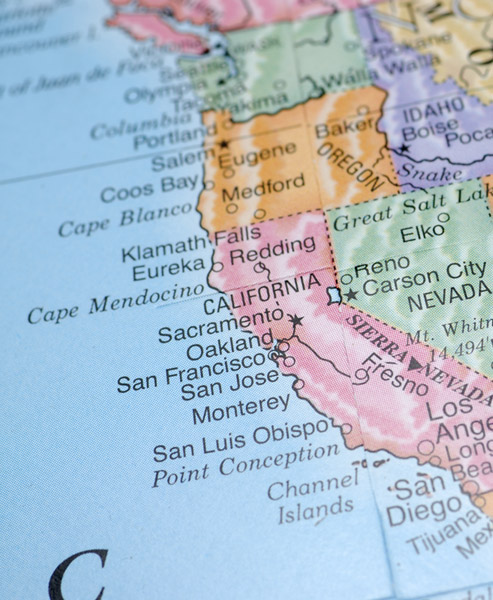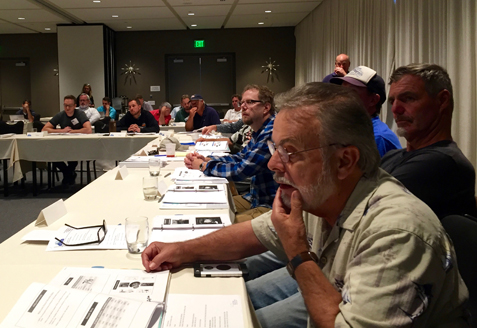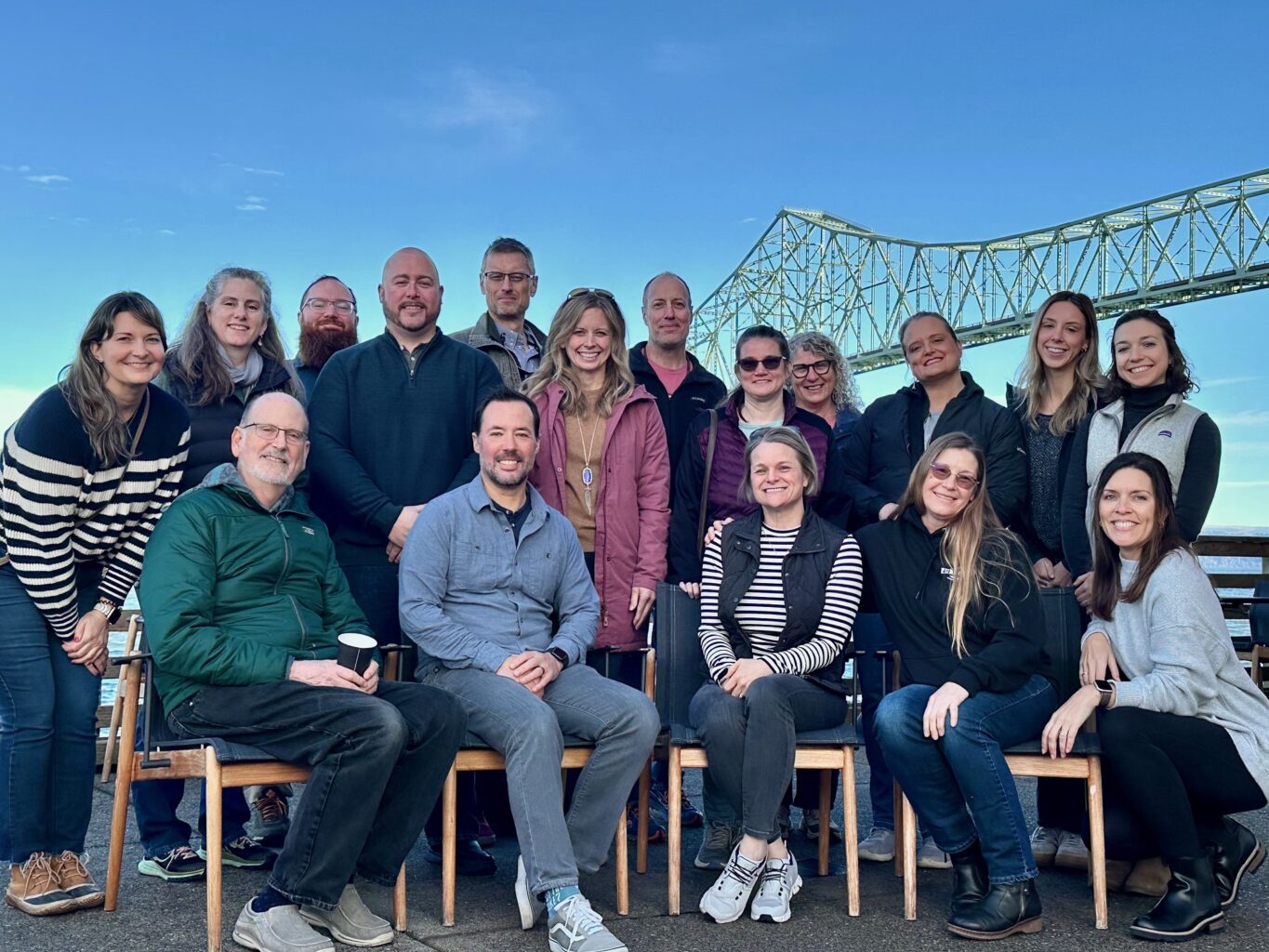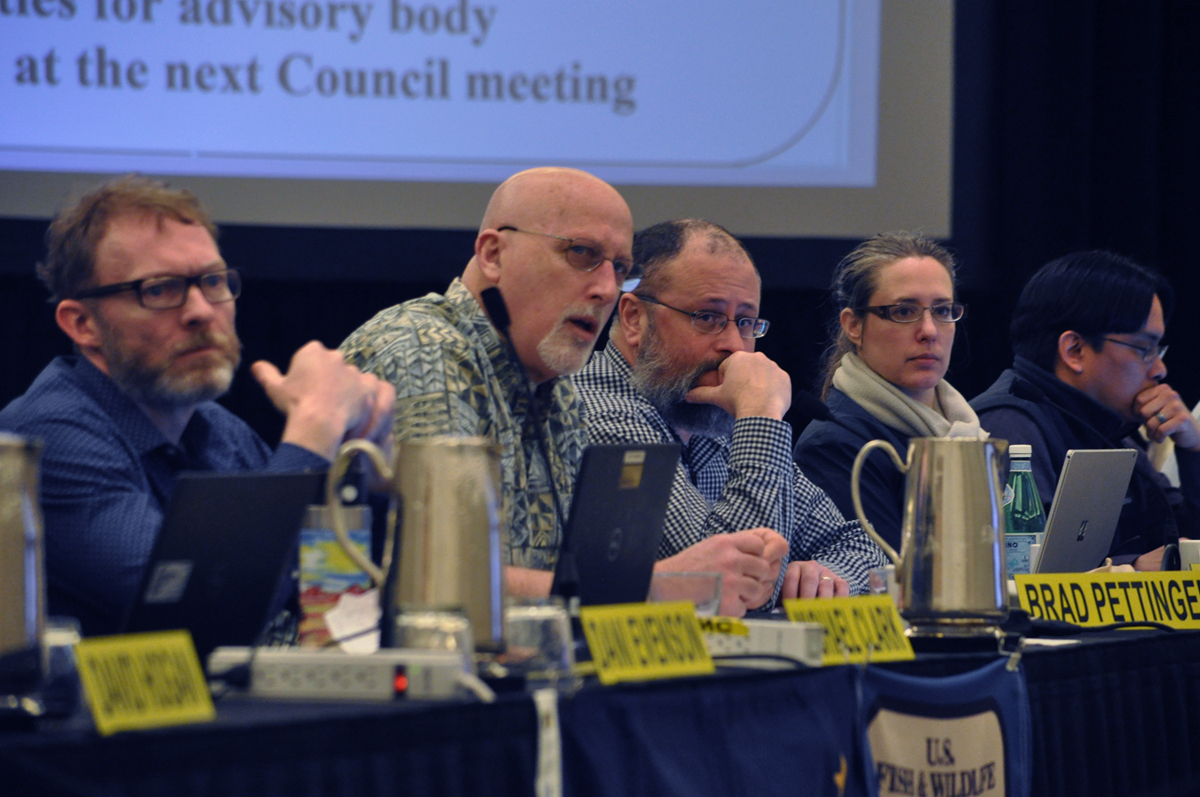The Pacific Fishery Management Council is one of eight regional fishery management councils established by the Magnuson Fishery Conservation and Management Act of 1976. We recommend fishery management measures in the Federal waters off Washington, Oregon, and California.

Jurisdiction
The Council has jurisdiction over the U.S. West Coast Exclusive Economic Zone (3-200 miles offshore). The Council manages commercial, recreational and tribal fisheries for about 119 species of salmon, groundfish, coastal pelagic species, and highly migratory species in Federal waters.
Washington, Oregon, and California manage fisheries in their state waters (1-3 miles offshore). The states also manage Dungeness crab, pink shrimp, and certain other species. The Council works with the states to ensure that management of shared stocks is consistent.
The Council coordinates closely with the Federally recognized West Coast tribes. Learn more about the tribes here.
For migratory fish stocks, the Council participates in international forums including the International Pacific Halibut Commission, the Western and Central Pacific Fisheries Commission (for albacore tuna and other species), and the Inter-American Tropical Tuna Commission (for yellowfin tuna and other species).

How we work
The Council process is a bottom-up process, emphasizing public participation and involvement. Participants include commercial and recreational fishermen, fish processors, tribal members, environmental and community representatives, consumers, and the general public. Along with fishery stakeholders, fishery and habitat scientists, state and tribal representatives, the U.S. Coast Guard and National Marine Fisheries Service all weigh in on whether an idea has merit and how it should be implemented. Decisions are made at Council meetings that are held five times a year and that are scheduled far in advance. In preparation for each Council meeting, the Council staff prepares a briefing book that includes overviews of each agenda item, background information, and public comment.

The Council and staff
The Council has 14 voting representatives from Oregon, Washington, California, and Idaho; many advisory bodies; and 15 staff members located in Portland, Oregon. Some Council members represent state or tribal fish and wildlife agencies, and some are private citizens who are knowledgeable about recreational or commercial fishing or marine conservation. Apart from state and tribal representatives, Council members are chosen by the governors of the four states within the Council region, in conjunction with the Secretary of Commerce.

Council operations
Management measures developed by the Council are recommended to the Secretary of Commerce through the National Marine Fisheries Service (NMFS). Management measures are implemented by NMFS West Coast Regional offices and enforced by the NOAA Office of Law Enforcement, the 11th and 13th Coast Guard Districts, and local enforcement agencies.
The Council’s Operating Procedures and Statement of Organizational Practices and Procedures guide the Council process and define how fishery management plans are created and amended.
The Council and NMFS must comply with the Magnuson-Stevens Fishery Conservation and Management Act and other applicable laws, including the National Environmental Policy Act, Endangered Species Act, Marine Mammal Protection Act, Regulatory Flexibility Act, Paperwork Reduction Act, Information Quality Act, various Executive Orders, and the Administrative Procedure Act. A Regional Operating Agreement among the Council and National Marine Fisheries Service specifies the responsibilities of each party in complying with these requirements.